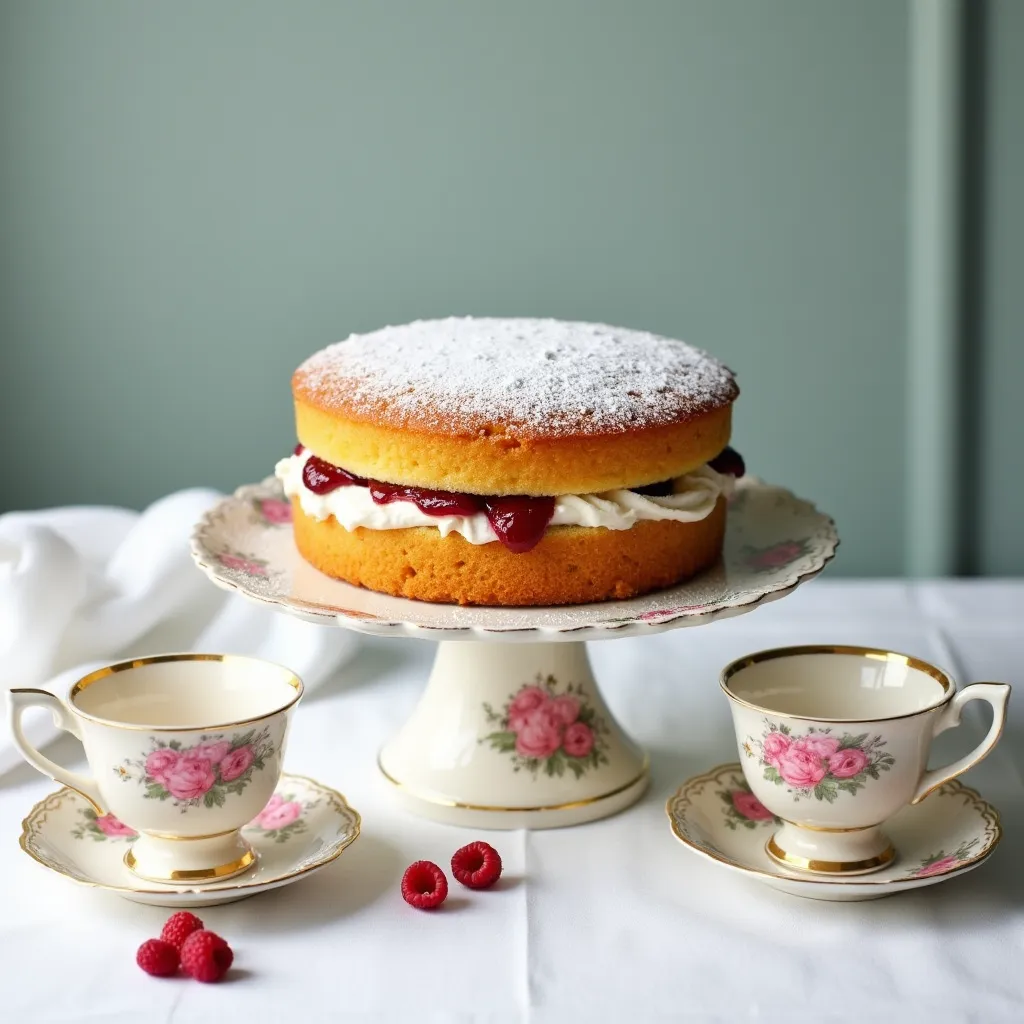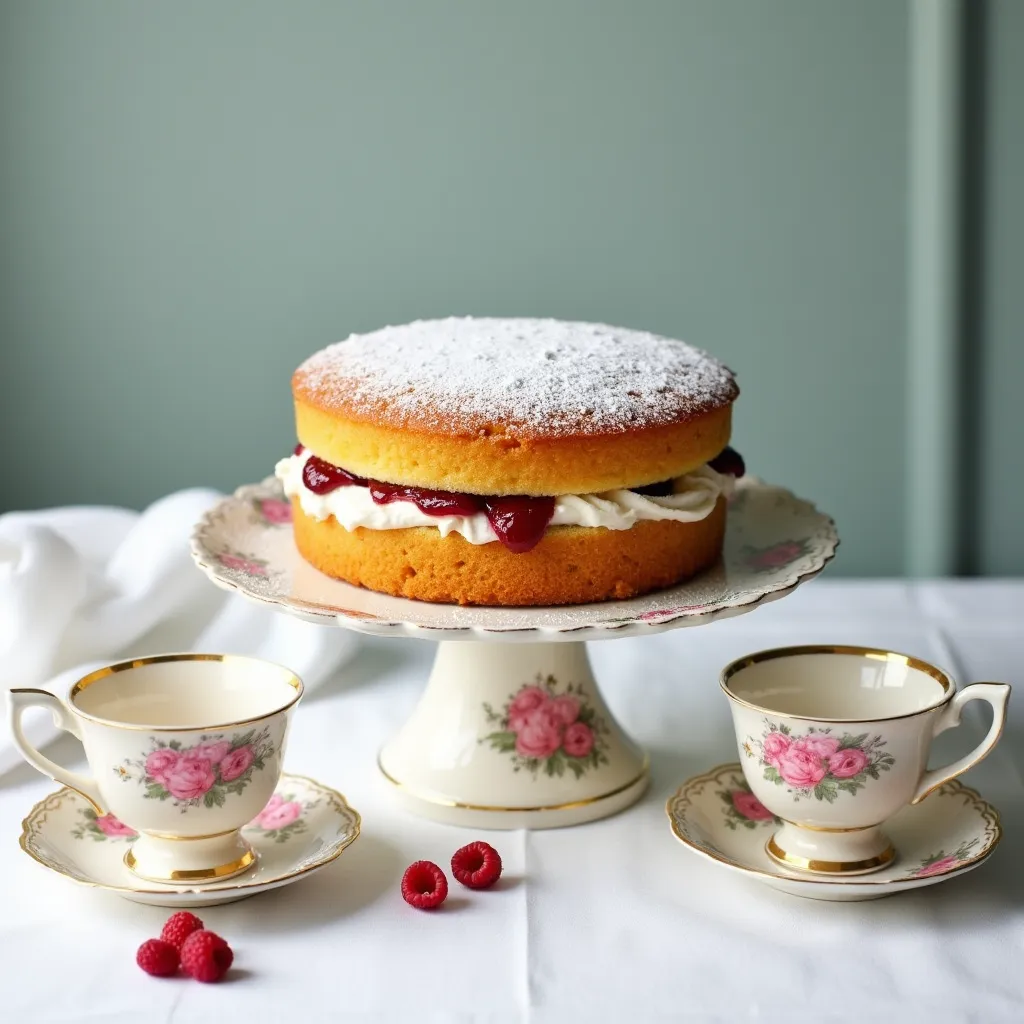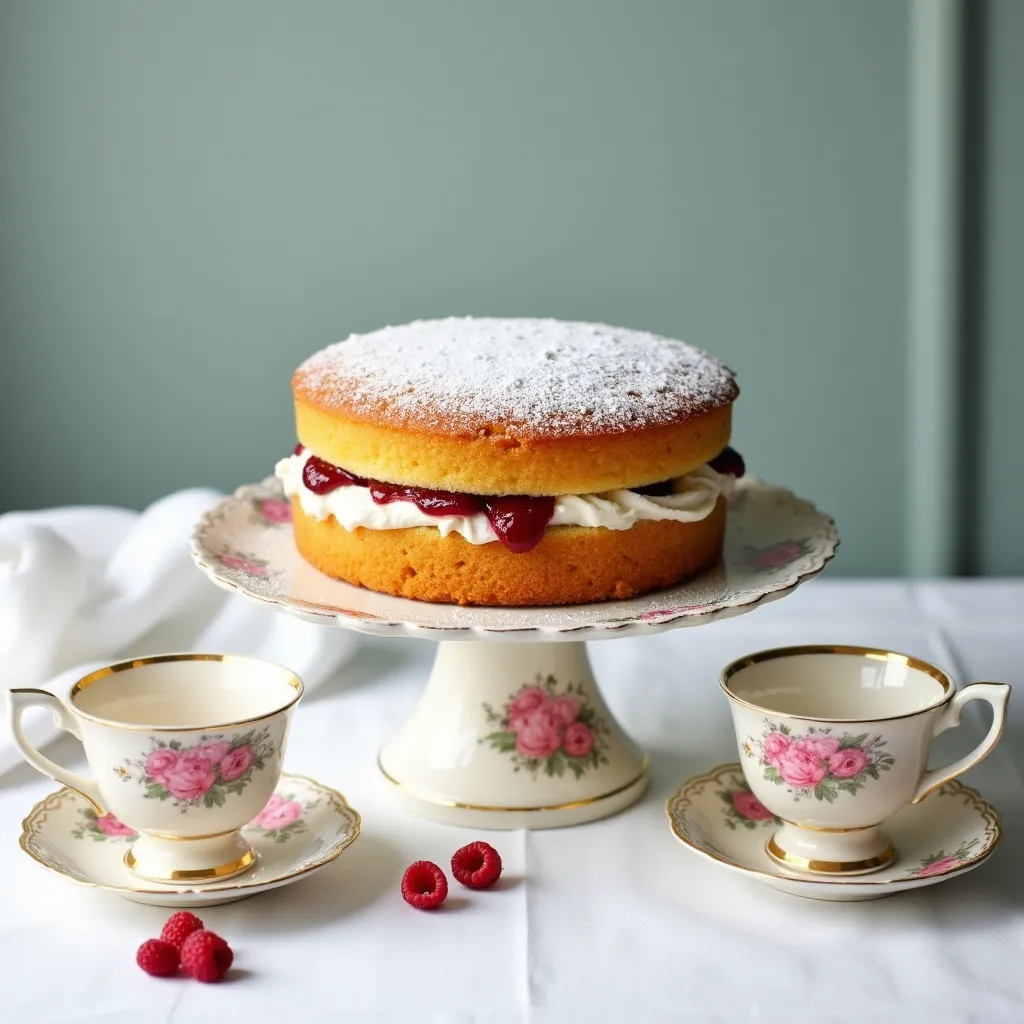 pin it
pin it
I first encountered the Victoria Sponge during a semester abroad in London, where it was a fixture at nearly every café I visited. The simplicity of this cake is what makes it so special – just two layers of light, buttery sponge sandwiching sweet jam and pillowy cream. What I love most is how the powdered sugar on top dissolves slightly into the warm cake, creating a delicate sweetness that isn't overwhelming. When I returned home, I was determined to recreate this classic British treat, and after several attempts at getting the texture just right, I finally mastered the perfect rise and tender crumb that makes a true Victoria Sponge so delightful.
Why I love this recipe
I love this Victoria Sponge recipe because it represents everything wonderful about British baking – unfussy, elegant, and delicious in its simplicity. The ingredients are pantry staples, yet when combined with care, they transform into something truly special. What makes this cake so satisfying is the perfect balance of textures: the soft, springy sponge against the smooth cream and sticky jam. I appreciate how versatile it is too – suitable for everything from an everyday afternoon treat to a centerpiece at a special occasion. There's something so comforting about a recipe that has been enjoyed for generations, connecting us to baking traditions that have stood the test of time. Every time I make it, the kitchen fills with a warm, vanilla-scented aroma that signals something wonderful is on its way.
What You Need From Your Kitchen
- Self-raising flour: Provides structure and lift to the cake
- Caster sugar: Adds sweetness and helps create a light texture
- Unsalted butter: Gives richness and flavor to the sponge
- Eggs: Bind the ingredients and add moisture
- Raspberry jam: Creates the sweet, tangy filling
- Double cream: Whipped for a luxurious filling layer
Let's Make These Together
- Prepare the batter
- Start by creaming softened butter and sugar until light and fluffy, then add eggs one by one with a spoonful of flour between each addition to prevent curdling. Gently fold in the remaining flour and baking powder until just combined.
- Bake the sponges
- Divide the batter between two lined cake tins and bake at 180°C for about 20-25 minutes until golden and springy. Allow to cool completely on a wire rack before assembling.
- Prepare the filling
- Whip the double cream until it forms soft peaks, being careful not to overwhip. Have your raspberry jam ready for spreading.
- Assemble your cake
- Place one sponge layer on your serving plate, spread with jam leaving a small border, then top with whipped cream. Gently place the second sponge on top and dust generously with icing sugar.
 pin it
pin it
Switch Things Up
I remember the first time I made a Victoria Sponge for my grandmother, who grew up in England. Her eyes lit up when I presented it on her mother's antique cake stand that she'd brought with her when she moved abroad. She told me the cake tasted just like the ones from her childhood. Sometimes I swap the raspberry jam for strawberry, or add a hint of lemon zest to the sponge for a subtle twist. When berries are in season, I like to add a few fresh ones alongside the jam filling.
Perfect Pairings
A slice of Victoria Sponge cake pairs perfectly with a cup of Earl Grey or English Breakfast tea. For something a bit more indulgent, try serving it with a glass of prosecco or champagne for a celebratory afternoon tea. If you're hosting a complete tea service, complement this sweet treat with savory finger sandwiches such as cucumber and cream cheese, egg and cress, or smoked salmon. Fresh strawberries or raspberries on the side add a beautiful touch of color and freshness.
 pin it
pin it
Frequently Asked Questions
- → Can I make Victoria Sponge ahead of time?
Yes, you can bake the sponge layers a day ahead and store them in an airtight container. However, it's best to assemble the cake with jam and cream on the day of serving for the freshest taste and texture.
- → Why did my Victoria Sponge sink in the middle?
This usually happens when the oven door is opened too early during baking, the cake is underbaked, or too much raising agent was used. Make sure your oven is properly preheated and avoid opening the door during the first 15 minutes of baking.
- → Can I freeze Victoria Sponge cake?
You can freeze the unfilled sponge layers for up to 3 months, well wrapped in plastic wrap and foil. Thaw completely before filling. I don't recommend freezing the assembled cake as the cream filling doesn't freeze well.
- → What's the difference between Victoria Sponge and Victoria Sandwich?
They're essentially the same cake! Victoria Sandwich is another name for Victoria Sponge, referring to how the cake is sandwiched together with jam and cream.
- → Can I use self-raising flour instead of plain flour and baking powder?
Yes, this recipe actually calls for self-raising flour with a small amount of additional baking powder for extra lift. If you only have plain flour, use 225g plain flour plus 2 teaspoons of baking powder instead.
- → What if I don't have caster sugar?
You can use granulated sugar instead, but caster sugar dissolves more easily into the butter, creating a lighter texture. If using granulated, you might want to blend it briefly in a food processor to make it finer.
Conclusion
The Victoria Sponge is a beloved British classic that has stood the test of time since the 19th century when it was enjoyed by Queen Victoria herself. With its perfect balance of light, buttery sponge, sweet jam, and fresh cream, it's no wonder this cake remains a staple at afternoon teas across the UK. Mastering this simple yet elegant dessert is a wonderful addition to any baker's repertoire.
